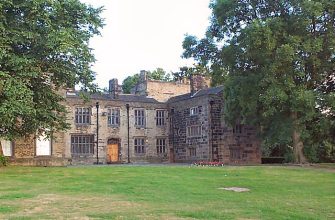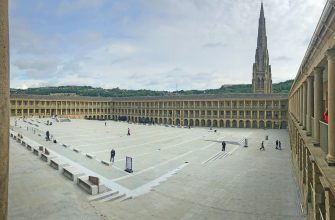Located in the northeastern corner of England, in the county of Northumberland, lies the Holy Island of Lindisfarne. This small, tidal island is steeped in history and religious significance, making it a popular destination for tourists and pilgrims alike. Known for its stunning natural beauty, historic sites, and unique tidal patterns, Lindisfarne offers a unique blend of natural and cultural attractions. The island is accessible from the mainland at low tide by means of a causeway, which gets submerged under the North Sea at high tide, adding to the island’s mystique and charm.
History of Lindisfarne
The Holy Island of Lindisfarne has a rich and varied history. It was an important centre of Celtic Christianity under Saints Aidan, Cuthbert, Eadfrith and Eadberht. Saint Aidan established a monastery on the island in AD 635, and Saint Cuthbert later became its bishop. The island became a place of pilgrimage due to Saint Cuthbert, who lived in the 7th century and is one of the most important saints in northern England. The island was also a significant centre of Anglo-Saxon scholarship and art. It was here that the famous Lindisfarne Gospels were created in the early 8th century.
Attractions on Lindisfarne
Lindisfarne boasts a number of historic sites and natural attractions. These include:
- The Lindisfarne Priory, the ruins of a 12th-century monastery that was one of the most important centres of early Christianity in Anglo-Saxon England.
- The Lindisfarne Castle, a 16th-century castle that offers stunning views of the Northumberland coast.
- The Lindisfarne National Nature Reserve, home to a wide variety of wildlife and a popular spot for birdwatching.
- The Holy Island of Lindisfarne Heritage Centre, which houses the Lindisfarne Gospels, a digital copy of the original manuscript.
Visiting Lindisfarne
Visitors to Lindisfarne should be aware of the island’s unique tidal patterns. The island is accessible by a causeway during low tide but is cut off from the mainland during high tide. It is essential to check the tide times before planning a visit to the island. There are several guided tours available that provide insights into the island’s history and natural beauty. Admission to the Lindisfarne Priory is ticketed, but the other attractions on the island are free to visit.
Tips for Tourists
Here are some tips for tourists planning to visit Lindisfarne:
- Check the tide times before you visit. The island is only accessible at low tide.
- Wear comfortable shoes. The island is best explored on foot.
- Bring binoculars if you’re interested in birdwatching. The island is home to a wide variety of bird species.
- Respect the island’s religious significance. Lindisfarne is still a place of pilgrimage and spiritual retreat.
In conclusion, the Holy Island of Lindisfarne, Berwick-upon-Tweed, is a unique destination that offers a blend of natural beauty, historic significance, and spiritual tranquillity. Whether you’re interested in history, nature, or spirituality, Lindisfarne has something to offer.








